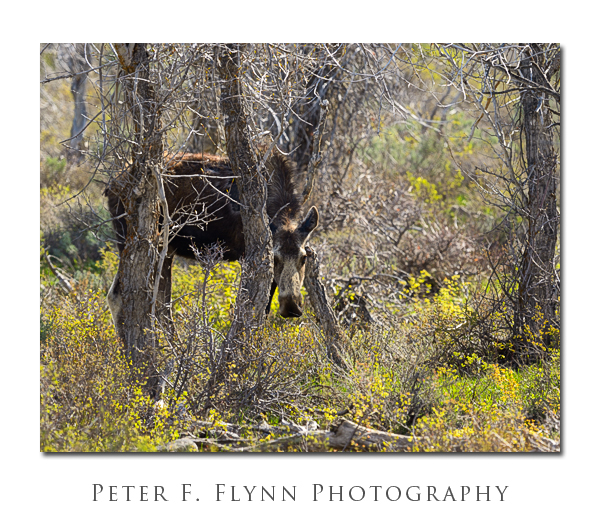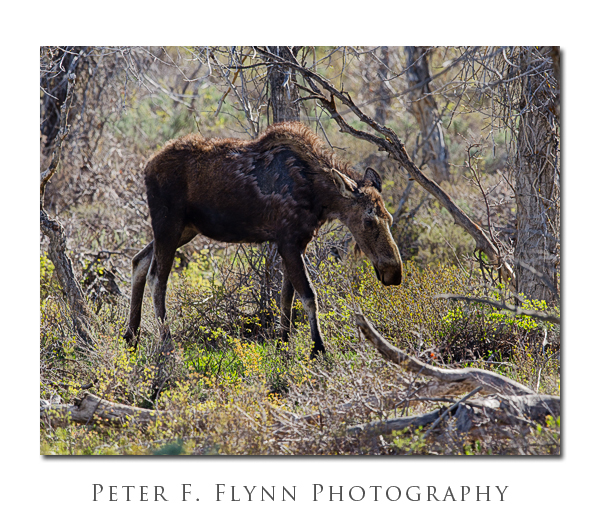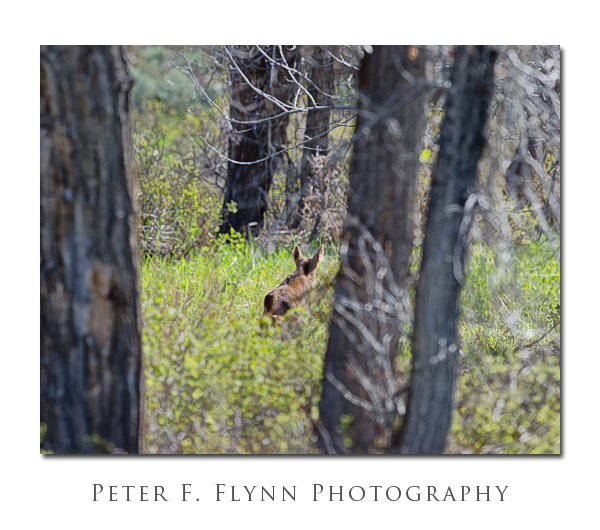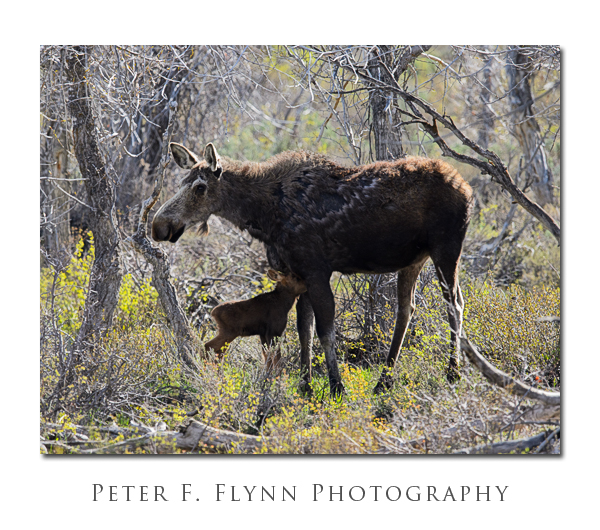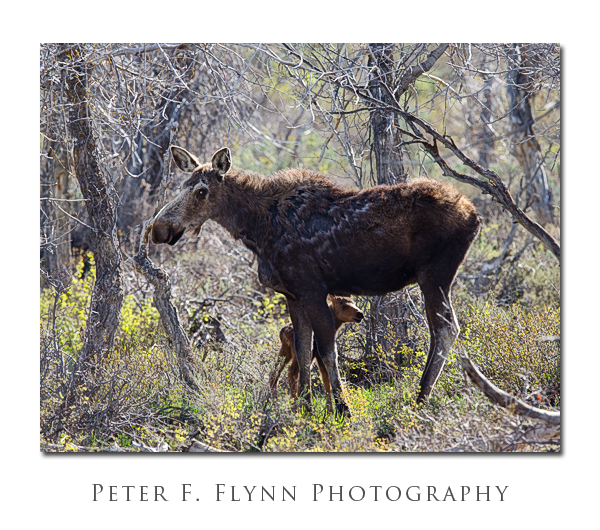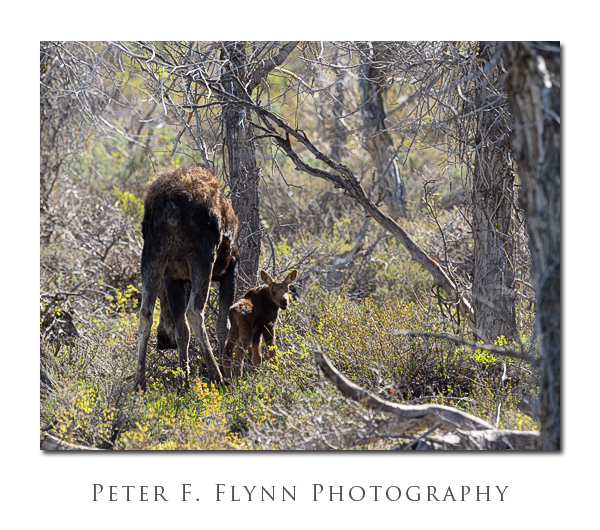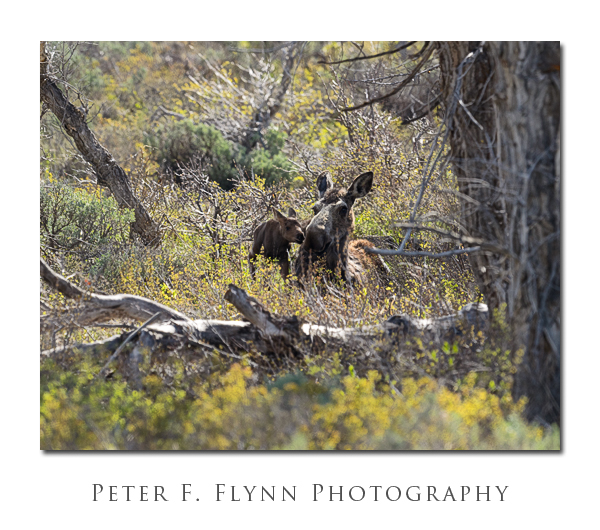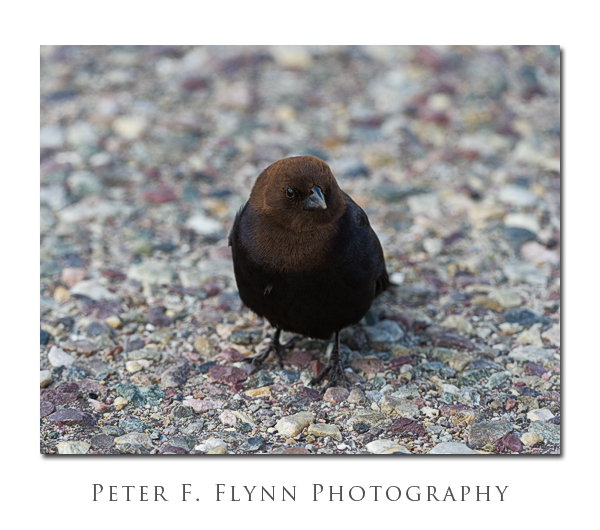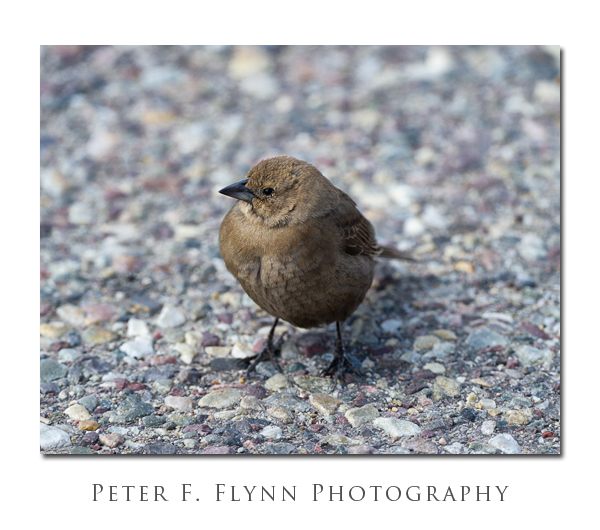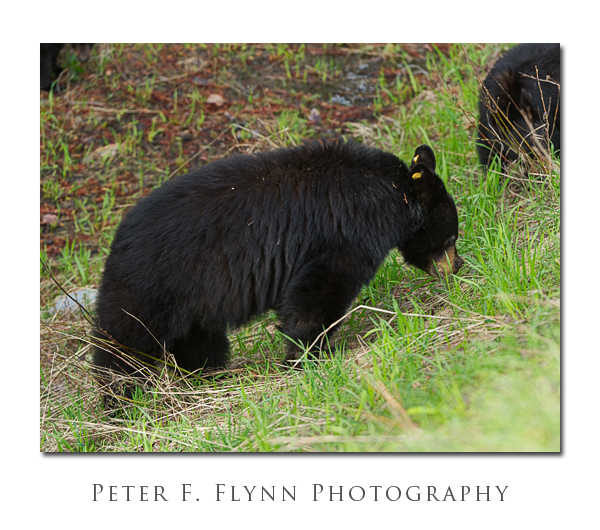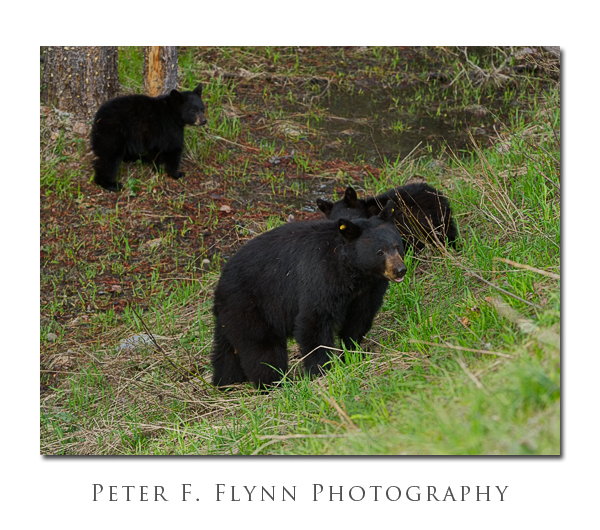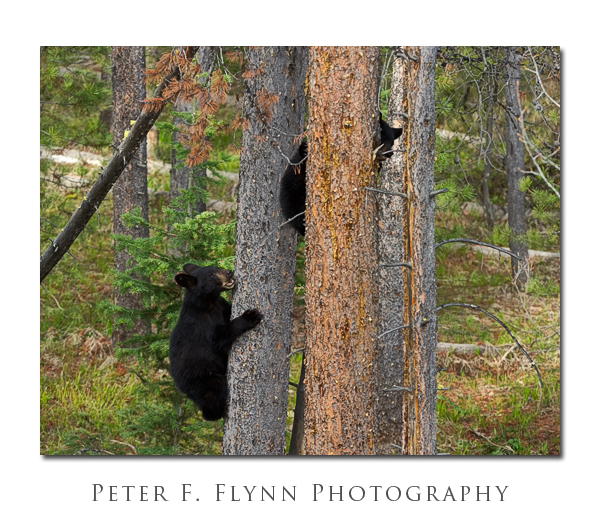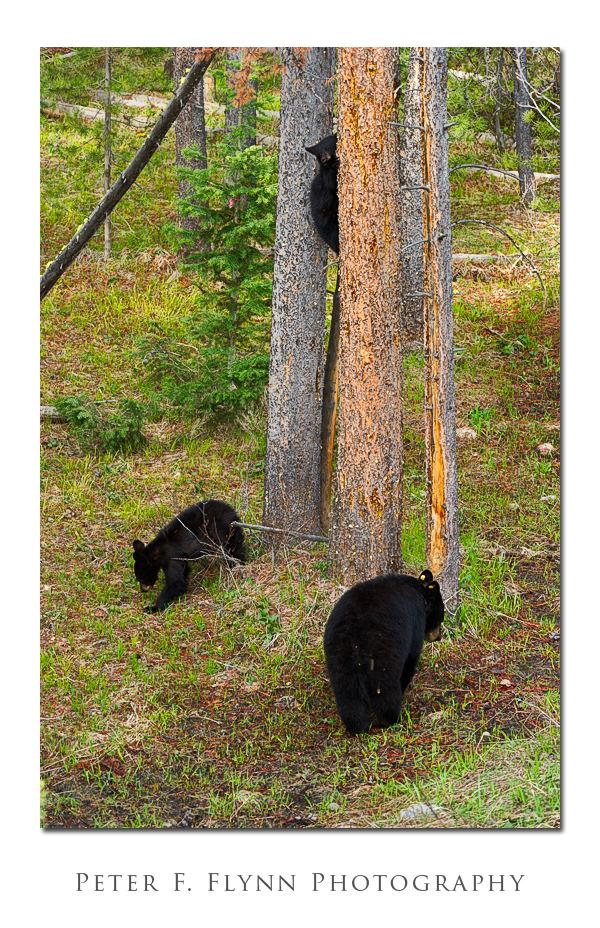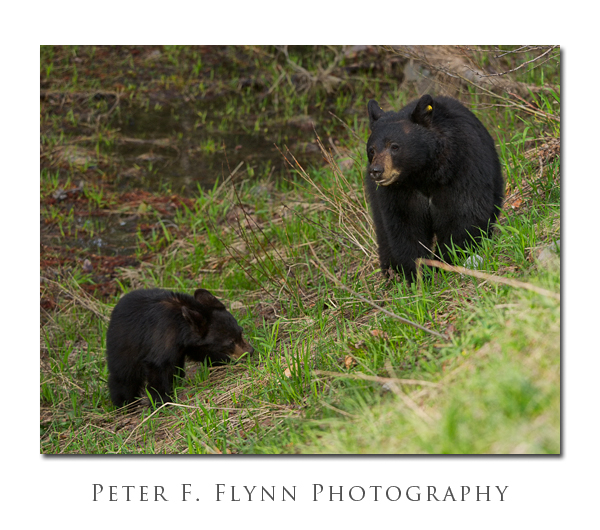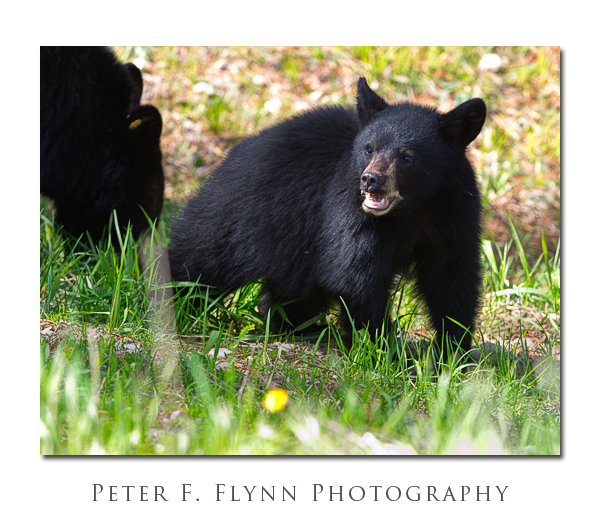One of the grand experiences of visiting the Yellowstone and Grand Teton National Parks during the spring is the presence of baby animals. Nothing gathers a crowd more quickly than the sighting of a Sow Bear and Cubs or a Cow Moose with a Calf.
As I’ve written previously, your best chances for observing Moose are near to, or in water. These animals certainly must travel significant distances from one watering hole to the next, but doing so must involve the most stealthy tactics, since we rarely see them far from a stream or lake. Park biologists estimate that there are approximately 1700 Moose in Jackson Hole, so your chances for seeing the largest specimen of the deer family are excellent. A few words of caution… Moose are not particularly aggressive animals, yet they can be provoked to attack even inadvertently, e.g., especially a Cow with Calf. These large animals can trot along at 20 mph, and can make 35 mph over shorter distances, so it is wise to restrict your approach to not less than 50 yards. It is rather well understood that the placement of the eyes on the sides of their heads makes it difficult for Moose to see directly in front. It is unclear whether this fact might aid in developing a defensive strategy, but it is perhaps something to keep in mind. For more information about the biology of Alces alces shirasi Nelson, I can recommend the following links:
Mooseworld: http://www.mooseworld.com/
National Geographic: http://animals.nationalgeographic.com/animals/mammals/moose/
Park Service: http://www.nps.gov/yell/naturescience/moose.htm
Wikipedia Entry: http://en.wikipedia.org/wiki/Moose
We found this Cow Moose and her Calf, probably just a few days old, in a brushy flat just north of Ditch Creek, along Antelope Flats Road. Approximate coordinates were 43°39’49.32″ N, 110°37’57.35″ W. A link to the Google Maps image of the area may be found here.
Images in this entry were recorded on June 3, 2011, at around 09:00 MDT, using the Nikon D7000 and the AF-S NIKKOR 600mm f/4G ED VR. Exposures were f/5.6 and 1/800s, ISO 640. This was a rather severely backlit scene, yet the D7000 metering was perfectly accurate.
Copyright 2011 Peter F. Flynn. No usage permitted without prior written consent. All rights reserved.
